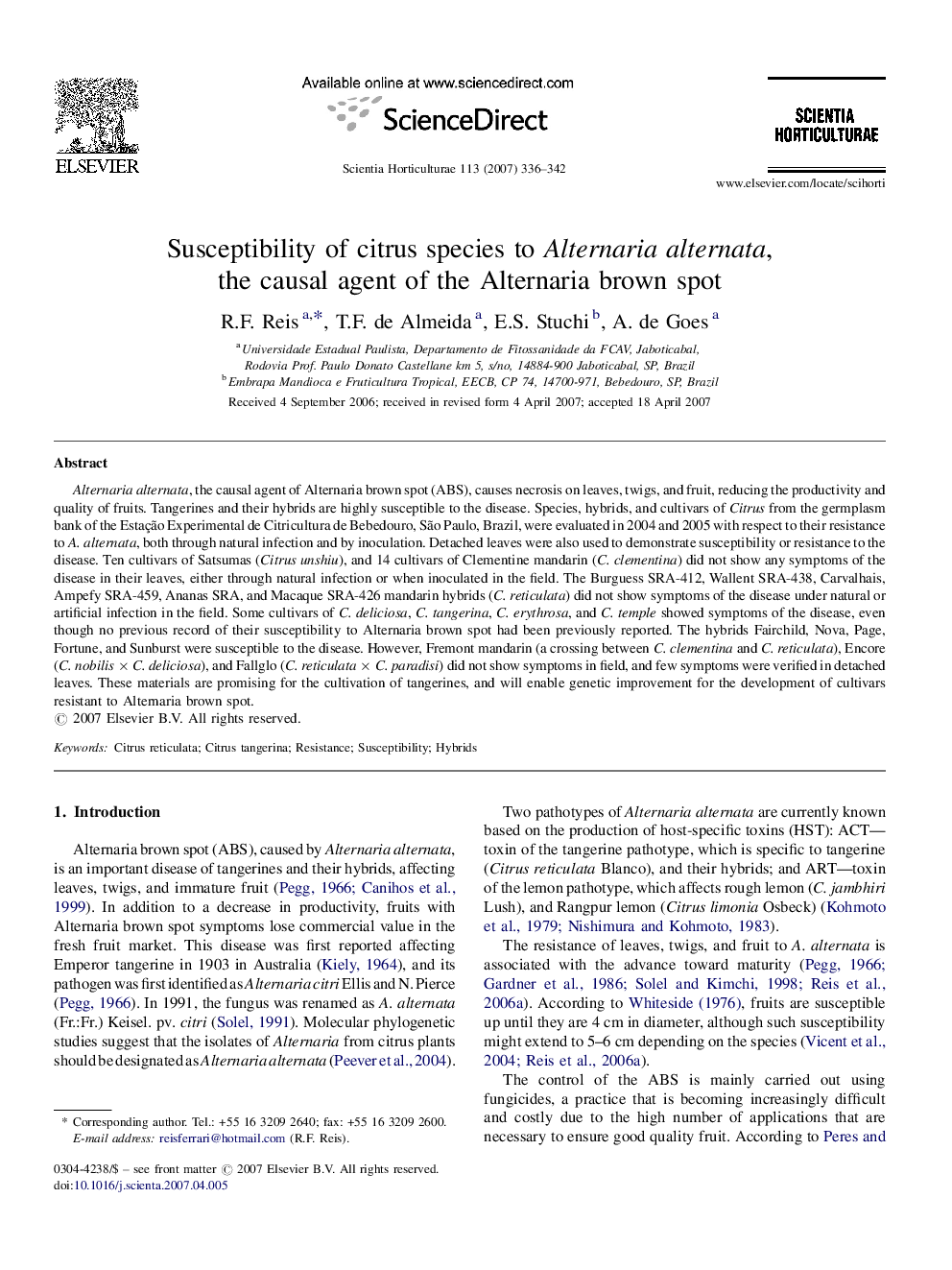| Article ID | Journal | Published Year | Pages | File Type |
|---|---|---|---|---|
| 4569881 | Scientia Horticulturae | 2007 | 7 Pages |
Alternaria alternata, the causal agent of Alternaria brown spot (ABS), causes necrosis on leaves, twigs, and fruit, reducing the productivity and quality of fruits. Tangerines and their hybrids are highly susceptible to the disease. Species, hybrids, and cultivars of Citrus from the germplasm bank of the Estação Experimental de Citricultura de Bebedouro, São Paulo, Brazil, were evaluated in 2004 and 2005 with respect to their resistance to A. alternata, both through natural infection and by inoculation. Detached leaves were also used to demonstrate susceptibility or resistance to the disease. Ten cultivars of Satsumas (Citrus unshiu), and 14 cultivars of Clementine mandarin (C. clementina) did not show any symptoms of the disease in their leaves, either through natural infection or when inoculated in the field. The Burguess SRA-412, Wallent SRA-438, Carvalhais, Ampefy SRA-459, Ananas SRA, and Macaque SRA-426 mandarin hybrids (C. reticulata) did not show symptoms of the disease under natural or artificial infection in the field. Some cultivars of C. deliciosa, C. tangerina, C. erythrosa, and C. temple showed symptoms of the disease, even though no previous record of their susceptibility to Alternaria brown spot had been previously reported. The hybrids Fairchild, Nova, Page, Fortune, and Sunburst were susceptible to the disease. However, Fremont mandarin (a crossing between C. clementina and C. reticulata), Encore (C. nobilis × C. deliciosa), and Fallglo (C. reticulata × C. paradisi) did not show symptoms in field, and few symptoms were verified in detached leaves. These materials are promising for the cultivation of tangerines, and will enable genetic improvement for the development of cultivars resistant to Alternaria brown spot.
